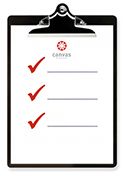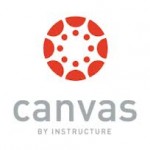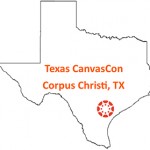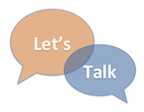 Welcome back to the Spring 2016 semester! Did too much holiday cheer wipe out your memories of those start of the semester tasks you need to do in Canvas? Is this your first semester teaching in Canvas? Here are a few things to check as you set your courses up for the semester. Remember that Turnitin Assignments will need to be set up again as the integration with Canvas has changed.
Welcome back to the Spring 2016 semester! Did too much holiday cheer wipe out your memories of those start of the semester tasks you need to do in Canvas? Is this your first semester teaching in Canvas? Here are a few things to check as you set your courses up for the semester. Remember that Turnitin Assignments will need to be set up again as the integration with Canvas has changed.
 Make your course available to students.
Make your course available to students.
- Publish your course by clicking on the “Publish” button in the upper right menu of the Home page
- Check the Start and End Dates for your classes. By default, students cannot view classes outside of those dates, even if the course is published. Go to the Course Settings to check and change the dates. Click on the “Update Course Details” button to save the changes.
 Rename your course to add the semester and year.
Rename your course to add the semester and year.
- Appending the semester and year to your course name will make it easier to identify in Messages and when combining sections. Go to Course Settings to change the name.
 Send a message to your students.
Send a message to your students.
- Send a message to your students via the Inbox or Conversations.
- Post an Announcement.
- Note: The course must be published for students to receive messages or notifications.
 Combine multiple sections of a course.
Combine multiple sections of a course.
- If you teach more than one section of the same course, you can combine these into one Canvas course.
 Add TA’s
Add TA’s
- Go to the People link in the course menu and select “+People”. Enter the TA(s) email address and click on “Add”.
 Import Content from another Canvas course
Import Content from another Canvas course
- Go to Course Settings for the Spring 2016 course and click on the button to “Import Content into Course”
- Under Content Type select “Copy a Canvas Course”
- Search for the course name
- Choose “All Content” unless you want to only copy over specific content or want to exclude Announcements created in your prior class. Note that Announcements from the prior semester are automatically included in an “All Content” import. These announcements will be available to students in the current course unless you delete them from Announcements. If you have announcements we recommend choosing “Select Specific Content” and not importing announcements.
- Click on “Import”
 Add Assignments
Add Assignments
- When you add an assignment it is also automatically added to “Assignments”, “Calendar”, “Syllabus” and “Grades”
- Turnitin Assignments are now created by selecting the Submission Type “External Tool”
 Meet with Instructional Technology
Meet with Instructional Technology
- We’re available to help you design your Canvas course, setup your grades, learn how to use new tools such as web conferencing or lecture capture, and to answer questions. Contact us at instcom@stedwards.edu.
We have several Introduction to Canvas trainings scheduled. Sign up at bit.ly/SEUITTraining .






 The TLTR will be awarding grants worth up to $5,000 to fund innovative teaching projects that incorporate new technologies and can be used as a model for other faculty. This year you may seek funding for specific technologies, conference costs, student research assistants, and other needs.
The TLTR will be awarding grants worth up to $5,000 to fund innovative teaching projects that incorporate new technologies and can be used as a model for other faculty. This year you may seek funding for specific technologies, conference costs, student research assistants, and other needs.





